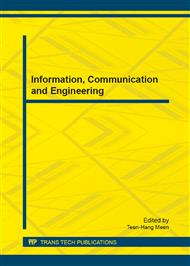p.3
p.9
p.15
p.20
p.26
p.32
p.37
p.43
A Courseware Recording & Editing System Based on DirectShow
Abstract:
With the development of network technology, it’s a trend to put up a bridge between the teaching resources and the learners. The network courseware is the most important part in Distance Education. A courseware recording and editing system is presented in this article. Using the Visual C++ 6.0 as design platform, the multimedia courseware recorder and player in this system is developed by using DirectShow technique, and the multimedia courseware editor is developed by using non-linearity edit system DES (DirectShow Editing Services). The system realizes the “Multi-Stream-In-One” (integrated of 2 video streams, 1 PC screen stream, and 1 stereo audio stream), and can add captions, subtitles and background music .etc. The generated courseware is an important resource for Distance Education, and can be widely used in daily teaching.
Info:
Periodical:
Pages:
3-8
Citation:
Online since:
February 2013
Authors:
Keywords:
Price:
Сopyright:
© 2013 Trans Tech Publications Ltd. All Rights Reserved
Share:
Citation:


